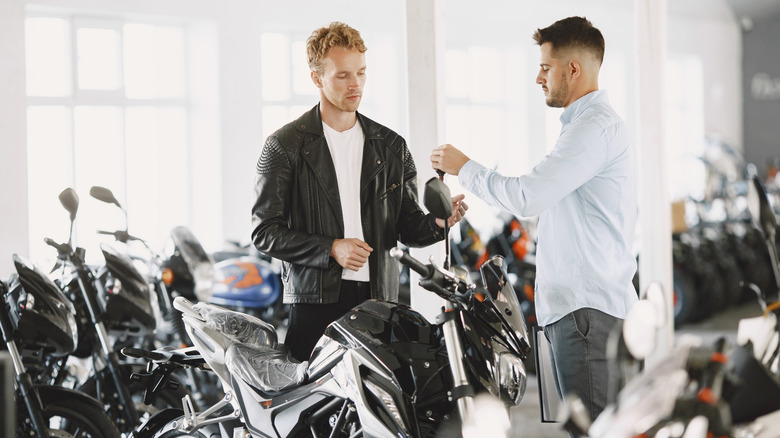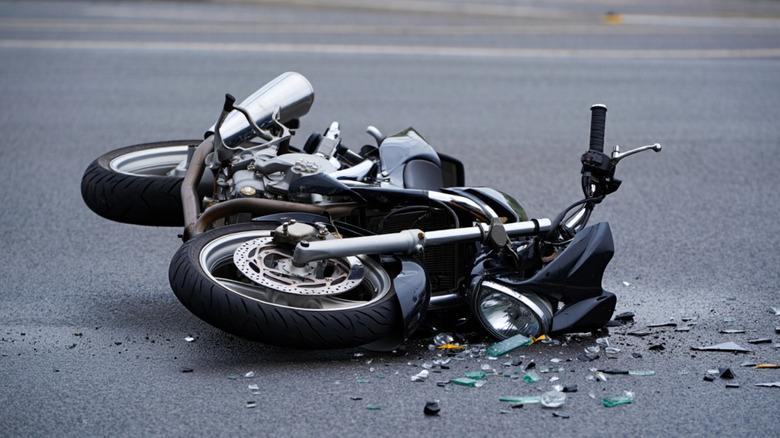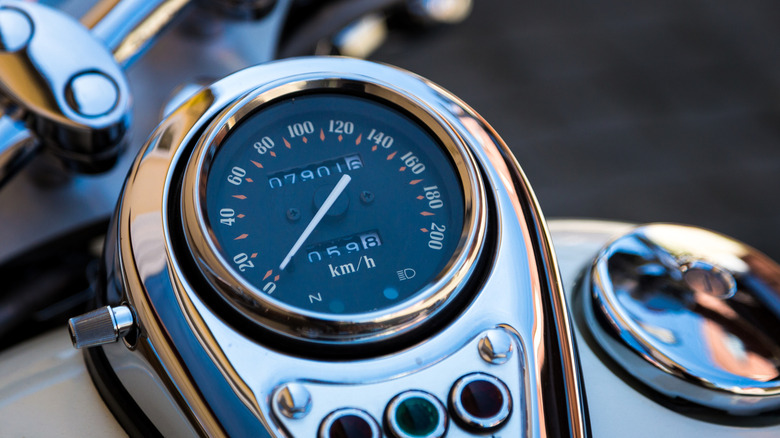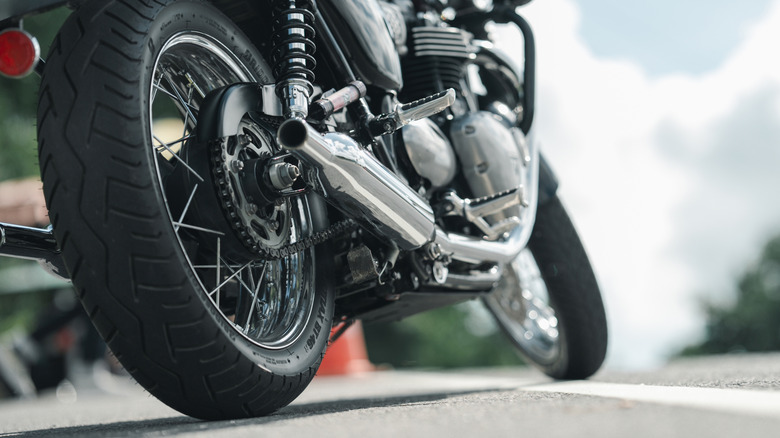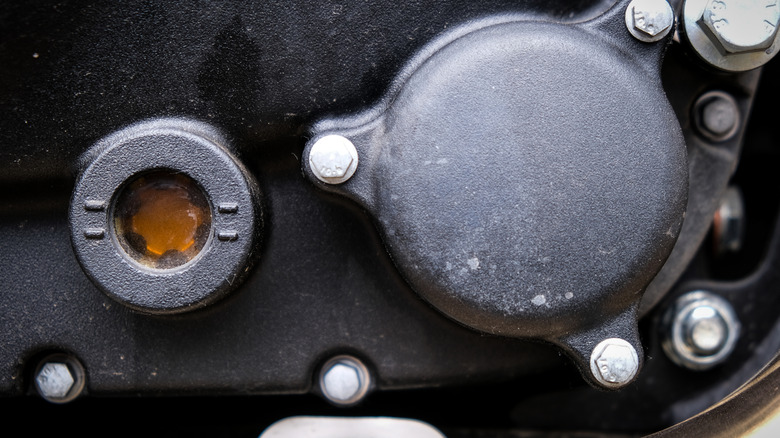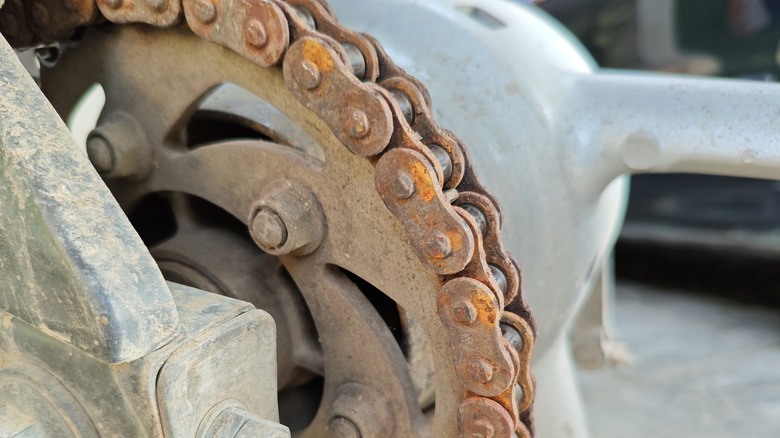What To Look Out For When Shopping For A Used Motorcycle Under $5000
There's a special kind of joy that comes with riding a motorcycle. The open-air vibes, the ability to be a part of the scenery as opposed to simply observing it from behind glass, and the connection with the machine are all part of the experience. But for lots of riders, a big part of the appeal of motorcycles is also the low cost of entry. Equalizing for performance factors, motorcycles tend to be way less expensive than most four-wheeled vehicles. That price difference carries over to the used market too, where a lot of riders get their start.
I've bought and sold lots of motorcycles over the years. Some of the motorcycles I've purchased have been excellent buys in great condition, and they're still in my stable after years. Others were wasteful money pits where I failed to look at a bike with proper scrutiny. That experience has taught me what to look for, what to avoid, and how to find a bike that's less likely to be a maintenance headache once you get it home.
If you're shopping for a bike under $5,000, there are a lot of options. Cruisers, sport bikes, and even some adventure bikes all come in under that mark. At that price point, though, there are a few important factors to consider — factors that wouldn't be a part of a new-bike shopping process. Stuff like mileage, potential leaks, and various wear items, should all be on your mind as you shop for something.
Look for signs of an accident or theft
First things first: it's important to know if the bike you're purchasing is stolen or ever was stolen. Most of the time, if you're shopping for used bikes online, the owner will be willing to send you a photo of the VIN. Use an online VIN-checking service to see the bike's history. Then, in person, physically check the VIN and make sure it matches the title. A bike that was stolen and recovered might not be a dealbreaker for some shoppers, but that's a decision you'll want to make on your own — not one you're tricked into. And if there's visible damage to the ignition, the bike may have been stolen in the past.
Then, there are accidents to be aware of. There are lots of small pieces on a motorcycle that can be damaged in an accident, especially slow-speed put downs or tip-overs, so be sure to check all the high points like bar ends, clutch and brake levers, and fairings. If the bar ends and levers are brand new and the owner doesn't have the old hardware, this could be a sign that the bike went down, and the owner replaced them. Aftermarket replacement fairings are a common modification too, but they may have been replaced as a result of a crash. Again, this might not be a dealbreaker for a cheap bike, especially if the bike is eventually destined for track use, but knowledge is power here.
Consider the mileage and required service
Mileage is an important marker for any used vehicle, and lining up the mileage of a motorcycle with the number of years it's been around is a good way to start your investigation, even before you see the bike in person. For instance, if a motorcycle is 10 years old and only has 2,000 miles on the odometer, that's probably not a bike that's used for a regular daily commute. It's possible that the bike was taken only on short, high-intensity rides, at the racetrack, for instance. The bike could also have been neglected over time, but we'll get to that in a bit. On the other end of the spectrum, if a motorcycle is just two years old and already has 60,000 miles on the odometer, you'll want to ask the previous owner about maintenance records, what kind of riding they did, and how the mileage got so high.
Be sure to seek out information regarding common problems and service intervals with the bike you're interested in. If the particular model you're buying is known for having an expensive service interval at the 20,000-mile mark, and the bike you're buying has 19,500 miles on the clock, it might not be such a bargain. A $5,000 motorcycle isn't so cheap if it has a $2,000 major service due in just a few miles. When buying something cheap, it's best to stay away from bikes that are notoriously expensive to maintain.
Check the condition and date of the tires
Thanks to the exposed nature of motorcycle parts, there's a lot you can visually inspect before you take a bike for a test ride of any nature — and tires should be somewhere near the top of your list for a pre-purchase inspection. Check the date code on the tires as well as the remaining tread life before making any purchases. Remember the low-mileage warning from the last section? Well, if a bike has sat around for a few years, especially exposed to the sun and weather elements, the tires can go bad. According to tire manufacturers like Michelin, motorcycle tires should be professionally inspected for signs of wear after five years of ownership.
Old tires aren't necessarily a dealbreaker with old, inexpensive bikes, but they're certainly part of the equation. If the tires need to be replaced before the bike is ridden, it's possible to negotiate that pricing change before forking over your cash. You'll also want to ask any private seller if the bike's been ridden hard, taken to any track days, or just spent time on the highway. Look at the undertrail of the motorcycle for splashes of rubber on the fender, or keep an eye out for flat/uneven wear across the rear tire. If the bike you're looking at has been used for a lot of burnouts, there might be signs of abuse like leftover tire debris on the underside and flat wear across the tire.
Take a closer look at the oil and other fluids
No matter what sort of used vehicle you're buying, it's always a good idea to check the oil. Checking the oil levels and checking the color/opacity are the two main items. Lots of modern motorcycles have small, see-through windows near the oil pan where you can check the oil level (these are called sight glass) while some bikes still use the tried-and-true dipstick method. Like with any internal-combustion-powered machine, motorcycle oil gets darker and more opaque over time, so black oil means a change is due soon. Oil leaks around the oil pan gaskets, or around the filter itself, are also items to watch for.
More than just the oil, you can visually inspect items like the brake-fluid reservoirs for proper fill levels and leaks of their own. Generally, you'll find the front brake fluid reservoir on the handlebars and the rear reservoir near the rear wheel. While you're looking for leaks, inspect the bike's front suspension too, specifically looking for leaks in the forks.
Fork seals leaking is a sign you'll need to get them replaced or rebuilt soon — a significant cost on any bike. If the bike you're purchasing uses a water-cooled system, you can also check the radiator hoses. Stiff, cracked, or swollen radiator hoses are a sign of an aging system that may need attention soon. When the bike is off and cool, give the hoses a squeeze to see if the rubber is still pliable.
Wear items like the chain and brakes should be on your list
If you're purchasing a bike with a chain, check the chain for proper lubrication. A rusty or kinked chain is a bad sign, as is a chain that can be physically pulled away from the rear sprocket. Check the chain slack, and if it's beyond the recommended limits from the manufacturer (this is often listed on a sticker on the bike's swing arm or in the owner's manual) then it should be adjusted before going for a ride. Check the sprockets for signs of wear, too. If the motorcycle you're looking at uses a drive belt, there are some visual inspection items for that too. Look for things like tears or missing pieces from the belt, and like with the chain, check the belt for the proper tension.
Unless you're dealing with a motorcycle that's got some serious body work, the brake pads should be visible as well. By looking at how much life is left on both the front and rear pads will give you a sense of the bike's maintenance needs. While it isn't exactly a wear item, you should also check the bike's battery. Like car batteries, most motorcycle batteries will have a date code so you can check on how old the battery is. Bring an inexpensive multimeter to check the voltage of the battery. It'll make you look pretty professional, and you'll also be able to tell if the battery is properly charged.
